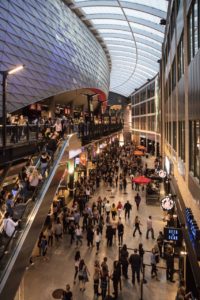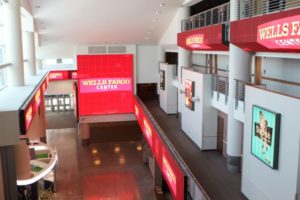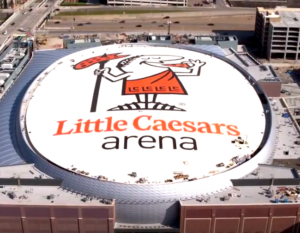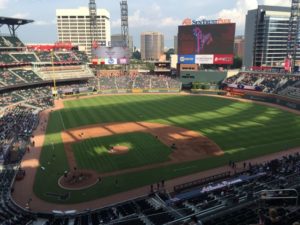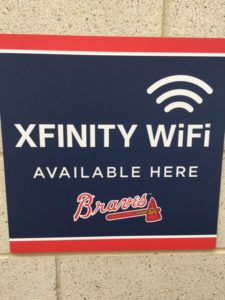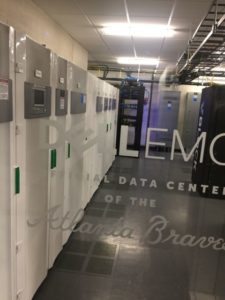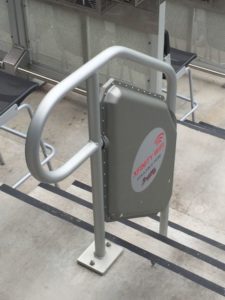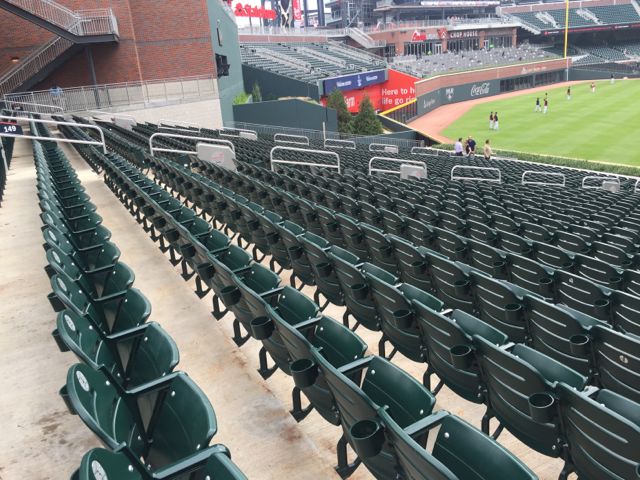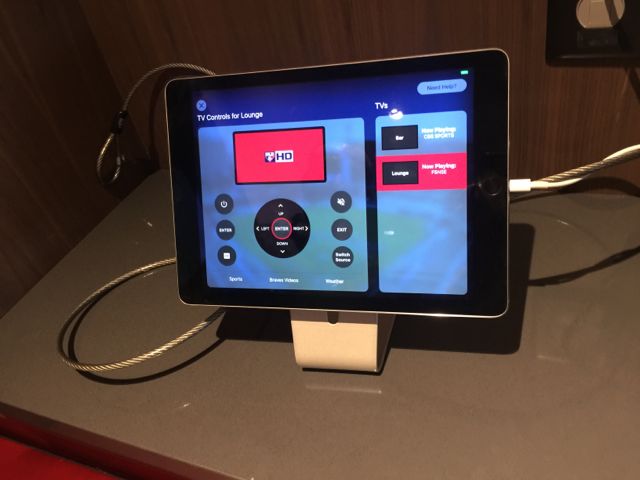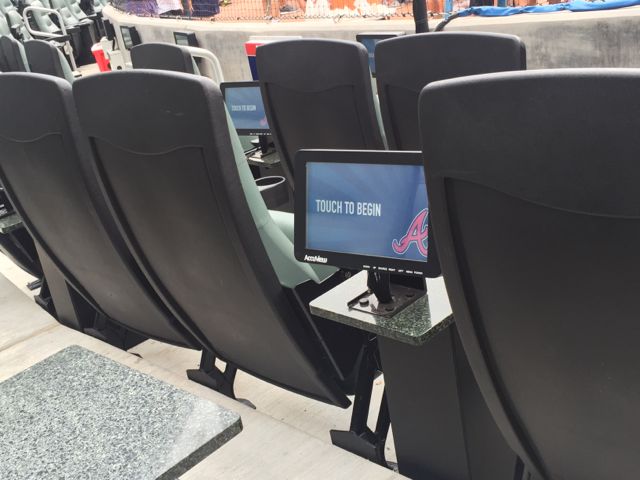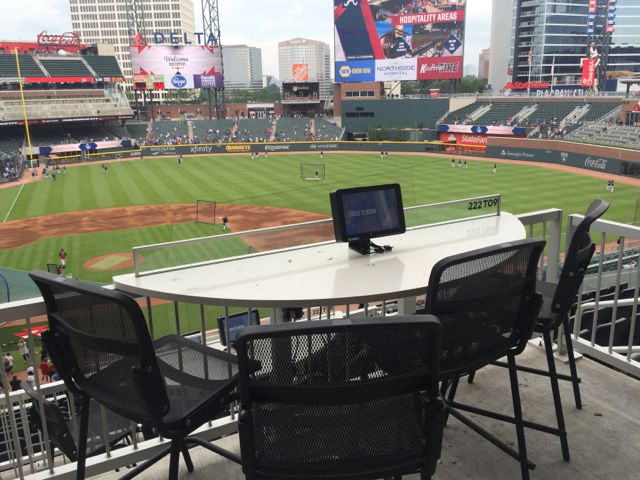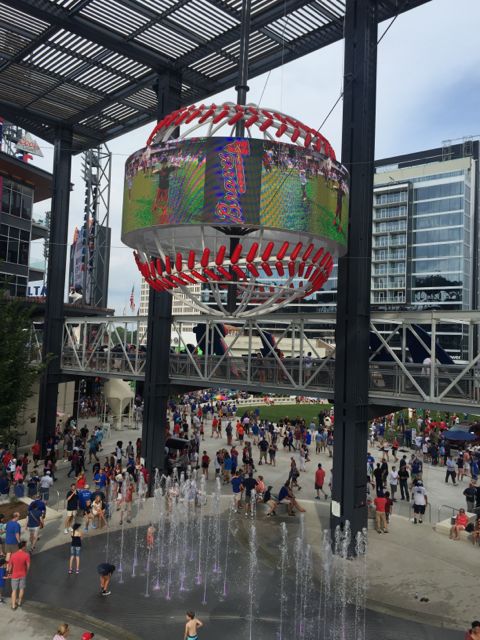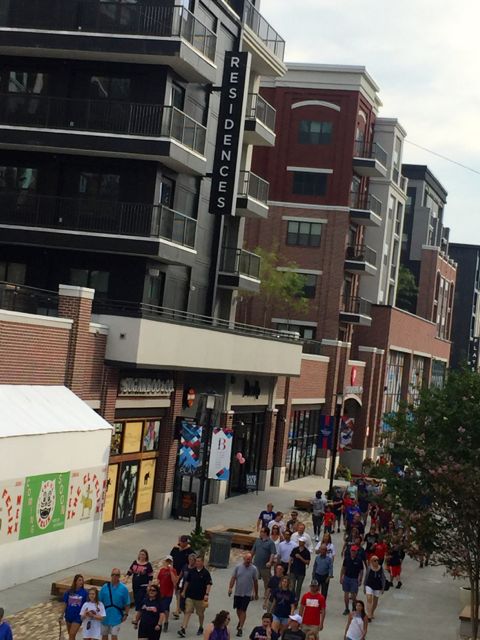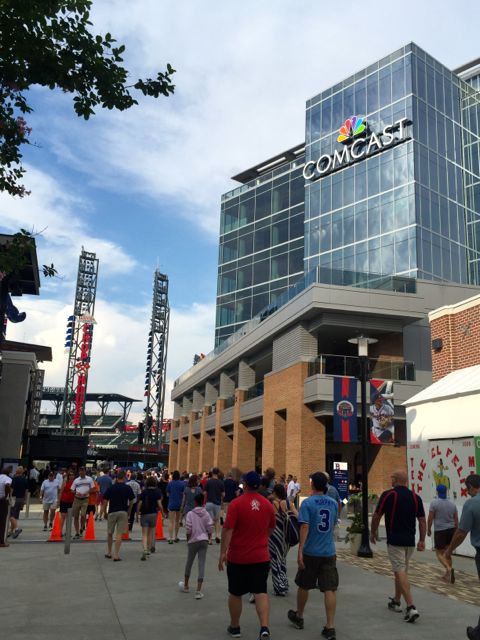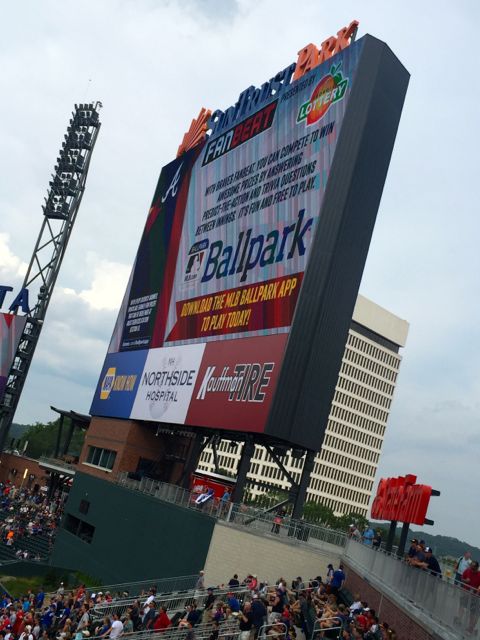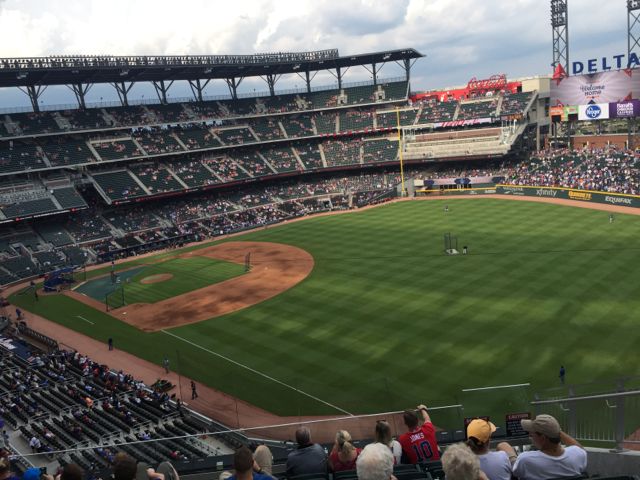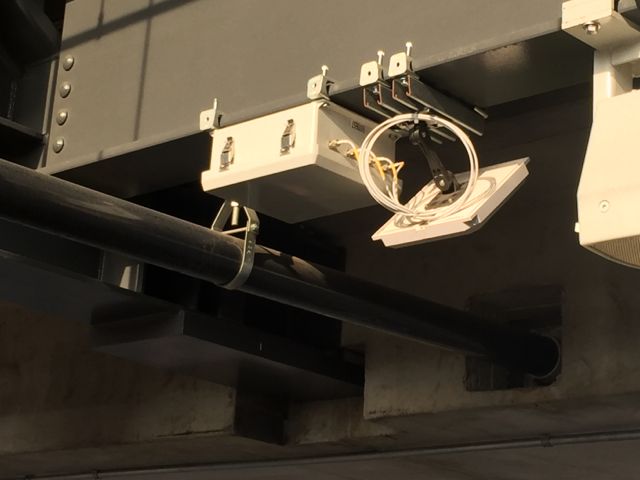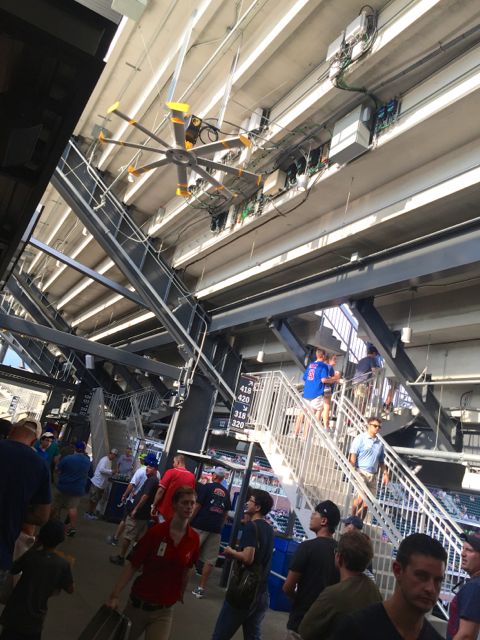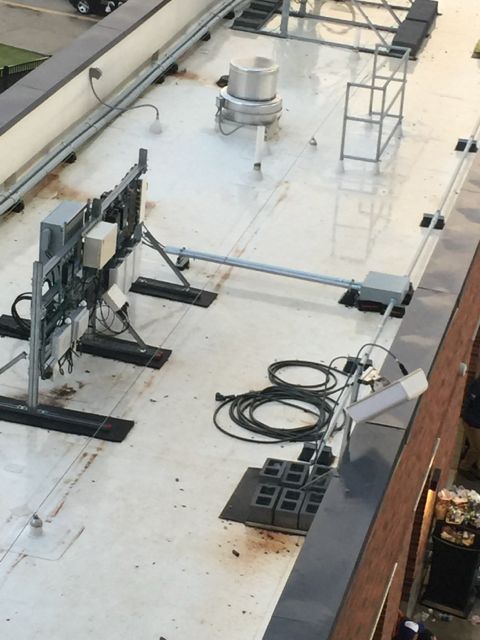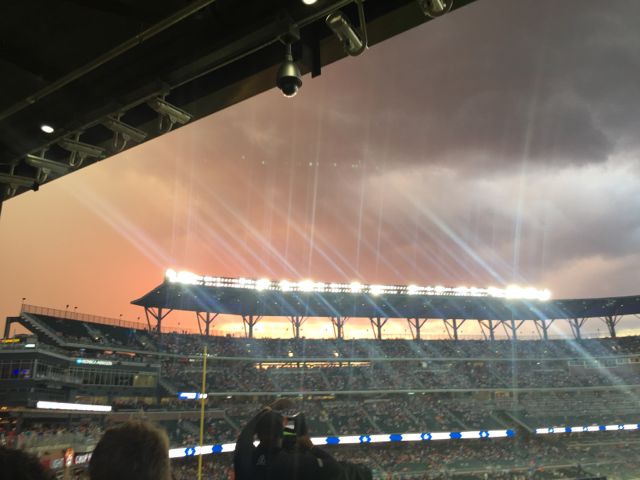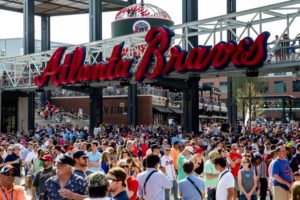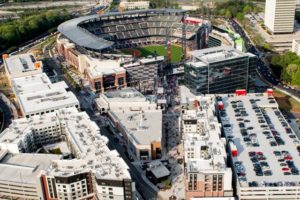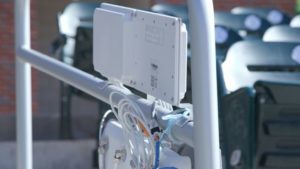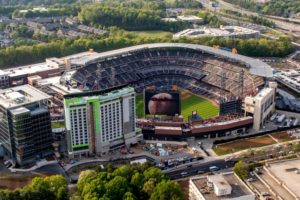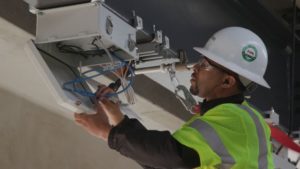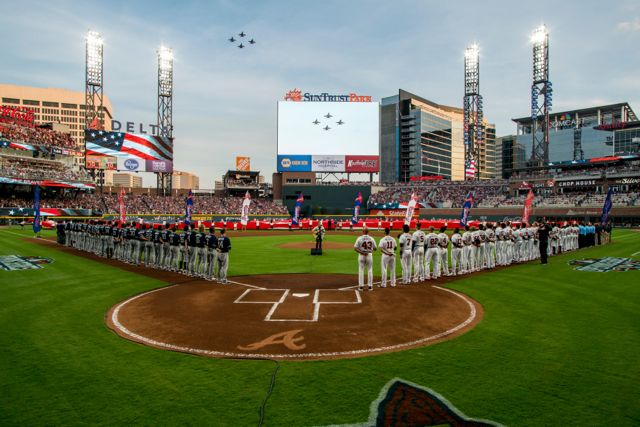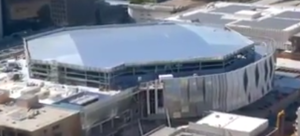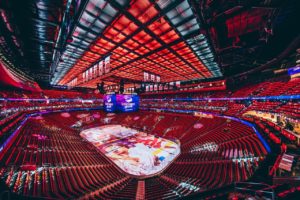
Little Caesars Arena, the new home for the Detroit Red Wings and the Detroit Pistons. Credit: Olympia Entertainment (click on any photo for a larger image)
Following the arena’s opening in September of 2017, the prognosis so far is so far, so good, with solid reports of high network performance on both Wi-Fi and cellular networks in and around the new home of the NHL’s Detroit Red Wings and the NBA’s Detroit Pistons. But for John King, vice president of IT and innovation for venue owners Olympia Entertainment, the responsibilities for him and his network team extend far beyond the new stadium’s walls.
“We’re focused on the [wireless] signal not just in the bowl, but also in the surrounding elements — the streets, the outdoor arenas, and the Little Caesars Arena garage,” said King in an interview shortly after the arena opened. “The vision is, to be connected wherever you are. And to share that experience.”
An ambitious revival in downtown Detroit
Editor’s note: This profile is from our most recent STADIUM TECH REPORT for Winter 2018, which is available for FREE DOWNLOAD from our site. This issue has an in-depth look at the wireless networks at U.S. Bank Stadium in Minneapolis, as well as profiles of network deployments at the Las Vegas Convention Center and Orlando City Stadium! DOWNLOAD YOUR FREE COPY today!
Built nearby the Detroit Lions’ Ford Field and the Tigers’ Comerica Park, the new hoops/hockey stadium seats 19,515 for hockey and 20,491 for basketball. Unlike many stadiums of the past which rise up from the ground, Little Caesars Arena is built into the ground, 40 feet below street level. The innovations in construction and accessibility, including an outdoor arena adjacent to the indoor one, may require another full profile and an in-person visit. For now, we’ll concentrate on the wireless deployment in and around Little Caesars Arena, which was funded in part by a sponsorship from Comcast Business, which provides backbone bandwidth to the arena and the district in the form of two 100 Gbps connections. The Wi-Fi network design and deployment, done by AmpThink, uses Cisco Wi-Fi gear; Cisco’s Vision for Sports and Entertainment (formerly known as StadiumVision) is used to synchronize video output to the 1,500 TV screens located in and around the venue.On the cellular side, Verizon Wireless built a neutral-host DAS, which was getting ready to welcome AT&T as the second carrier on board shortly after the opening. According to King, the Wi-Fi network has approximately 1,100 total APs both inside and outside the arena, many of those from Cisco’s 3802 series, which each have two radios per AP. For many of the 300 APs located in the main seating bowl, Little Caesars Arena went with an under-seat deployment, with some others placed in handrail enclosures, especially for the basketball floor-seating areas.
“AmpThink did a really nice job with the deployment,” said King, who said the arena’s open-air suite spaces helped provide “lots of flow” to wireless gear, without the historical overhangs around to block signals on different levels. One early visitor to the arena saw many Wi-Fi speed tests in the 50-60 Mbps range for both download and upload, as well as several in the 80-to-100 Mbps range, signs that a strong signal was available right at the start.
“We’ve still got a lot of tuning, but early on we’re getting great results,” said King of the Wi-Fi performance. “Our goal is to make it the best it can be.”
Staying connected outside the walls
Like The Battery area surrounding the Atlanta Braves’ new SunTrust Park, the District Detroit is meant to be a stay-and-play kind of space, with restaurants, clubs, office spaces and residences seeking to lure visitors and residents to do more than just see a game. For King and his team, one of their tasks is to ensure that visitors can stay connected no matter where they are inside the district, including inside restaurants, offices and other indoor spaces.
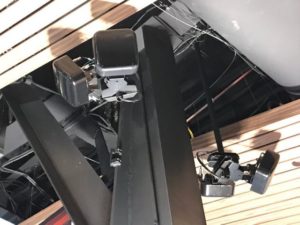
Connectivity blends well with the architecture inside Little Caesars Arena. Credit: Tod Caflisch, special to MSR
Back inside Little Caesars Arena, the team and stadium apps are built by Venuetize, which built a similar integrated app for the Buffalo Bills and the Buffalo Sabres, one that also extends outside arenas to support connectivity in city areas. King said that Little Caesars Arena will be testing pre-order and express pickup concession ordering through the app, with a focus on seating areas that don’t have ready access to some of the club facilities.
Like any other new facility, Little Caesars Arena will no doubt go through some growing pains in its debut season, but for King and others who spent time getting the venue ready it’s fun to have the doors open.
“It’s really great seeing it all come to life,” King said.
